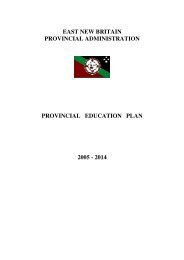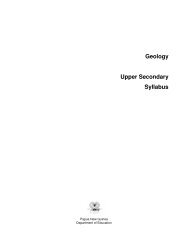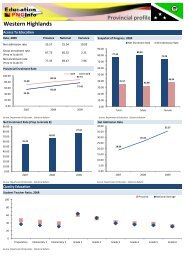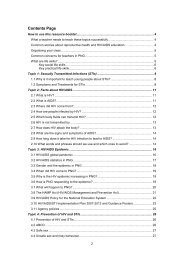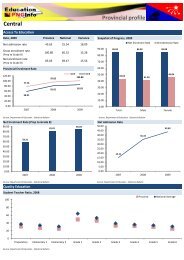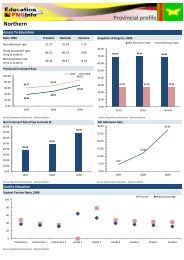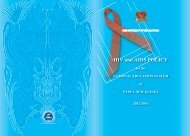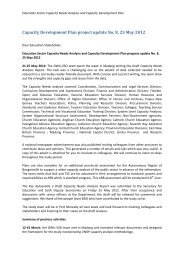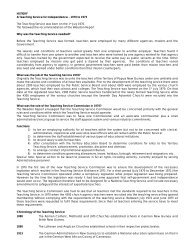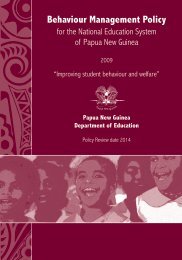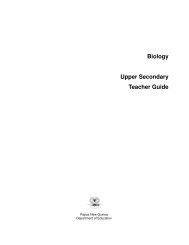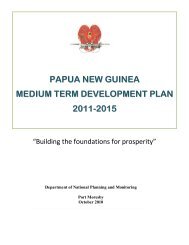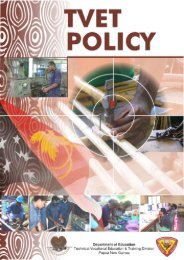Physical Education - Department of Education
Physical Education - Department of Education
Physical Education - Department of Education
You also want an ePaper? Increase the reach of your titles
YUMPU automatically turns print PDFs into web optimized ePapers that Google loves.
<strong>Physical</strong> education<br />
Ways <strong>of</strong> recording observations<br />
There are a number <strong>of</strong> manageable ways to record observations <strong>of</strong> students’<br />
achievements. These include:<br />
• checklists with comments<br />
• class grids that allow the teacher to date their observations and focus on<br />
only a few students during each lesson until they have recorded<br />
information about all students. These grids can be used to repeat the<br />
observations a number <strong>of</strong> times to build a fuller picture <strong>of</strong> each students’<br />
learning<br />
• having a page for each student in an exercise book to keep dated,<br />
anecdotal records <strong>of</strong> significant learning<br />
• having students complete peer assessments that show the performance<br />
<strong>of</strong> other students, either as individuals or in groups, against the<br />
assessment criteria.<br />
Sometimes it may be necessary for the teacher to talk to the student about<br />
what they are observing as it is possible to misinterpret information. For<br />
example, a student staring out the window during a writing activity may be<br />
seen to be wasting time. When questioned, the student may well respond<br />
with a comment such as ‘I was thinking what to write next,’ or, ‘I was<br />
translating my sentence from vernacular to English in my head first’.<br />
Conferencing or talking to students<br />
In similar ways, teachers can gather information about students’<br />
understanding <strong>of</strong> what they are learning by sitting and talking with them while<br />
they are working.<br />
Examples <strong>of</strong> when to use conferencing to assess students’ learning<br />
This is most useful in:<br />
• practical lessons where students are applying skills<br />
• language activities like shared or individual reading or when assessing<br />
students’ writing<br />
• small group work<br />
• learning activities that are happening out in the community.<br />
Teachers can ask relevant questions such as:<br />
• What do you think is happening here<br />
• Why did you do it that way<br />
• Is there another way you could do this<br />
The purpose <strong>of</strong> conferencing is to gather information about students’<br />
knowledge and understanding <strong>of</strong> what they are learning. It can also give a<br />
good insight into students’ attitudes to learning.<br />
13



